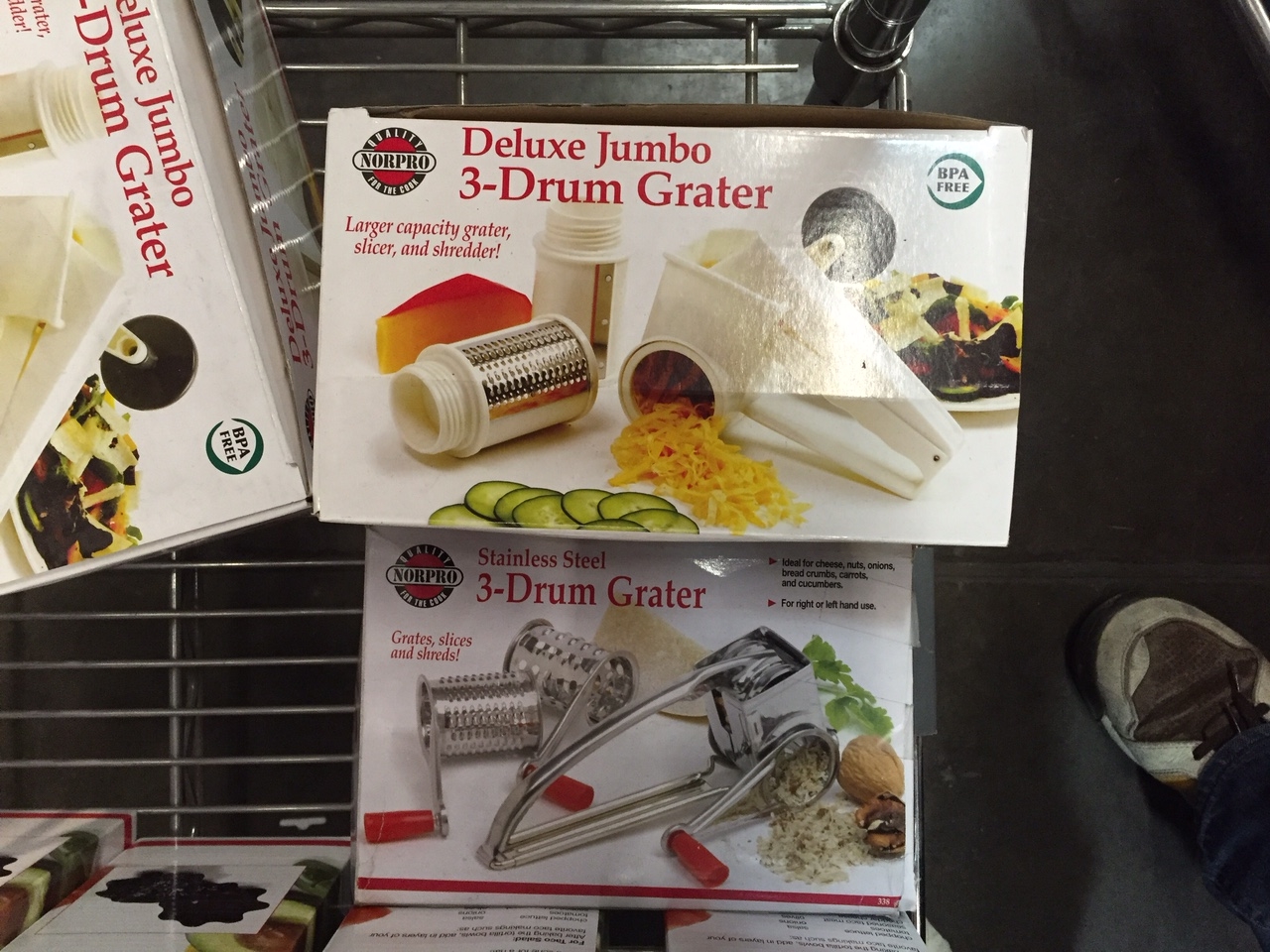Shiba Ramen's negligence lawsuit against its architect was a rare opportunity for me to be a plaintiff. In my day job as a litigator at a large firm, I've worked on a ton of different cases: mortgage banking, securities fraud, patent and insurance disputes, and the list goes on. But I almost always represent larger corporate defendants in these cases. When I do represent a plaintiff, it's likely a corporate plaintiff suing another company. Litigation is expensive business, after all, and most big firms charge by the hour, not on a contingency fee basis.
Our lawsuit was also an opportunity to litigate a case that could have sprung off the pages of a first-year law student's torts final, or maybe from an episode of the People's Court. A "tort" is a wrongful act that gives rise to civil liability. Think medical malpractice, defective products, assault, sexual harassment, defamation, fraud, trespass. Or just simple negligence: a careless act--by someone obligated to be careful--causing injury to another party.
Res ipsa loquitur
In the very first weeks of law school, students learn the tort principle of res ipsa loquitur. Meaning the thing speaks for itself. This is a legal doctrine holding "without negligence, the accident would not have happened." The idea is that if an accident happened, and somebody else had exclusive control of whatever caused the accident, that person is presumed to be liable for negligence, even with no direct evidence of a careless act. I learned this, as many do, through an 1863 case from the English Court of Exchequer, Byrne v. Boadle. In Byrne, a warehouse owner was presumed negligent when a barrel of flour rolled out of an upstairs window of the warehouse and struck a passer-by, even though there was no evidence of what caused the barrel to come loose. When res ipsa loquitur applies, the burden of proof shifts to the defendant to prove he isn't liable, that something outside his control caused the accident.
I don't think our case was precisely res ipsa loquitur, because we had direct evidence somebody on the architect side moved the sinks and caused an unnecessary injury. I raise it anyway because it's a close analogy and because of the logic it represents: when the kitchen designer handed the drawings to the architect they were accurate, but when the architect in turn handed them to the general contractor, they weren't, causing a major structural error during construction. We the client had never touched the drawings and were relying justifiably on the expertise of those that did. Somebody has to be responsible (right?), and everything suggests responsibility lies with the architect/MEP. Regardless of the legal theory, I felt pretty good about Shiba Ramen's negligence case.
Ralph Nader's Tort Museum. Apparently a real thing. Byrne v. Boadle installation, left. Holy Shit, That's a Crazy Picture. The fellow who taught me that case is Lawrence Lessig (next to Ben Carson, bow tie), fairly odd guy and briefly single-issue Presidential candidate this year.
Now Pending in Alameda County Superior Court
Filing a lawsuit is a pretty easy thing to do, when it comes down to it. I learned this lesson right after law school, when I clerked for a federal judge and spent a year analyzing cases and drafting the judge's orders. Some crazy fringe shit comes in the door of any courthouse every single day. I still recall seeing crank cases brought by foreclosed homeowners invoking things like "vapor money theory" and "unlawful money theory," which is some nonsense notion that if the funds borrowed to purchase property weren't tendered by the bank in silver or gold, there is no debt that must be repaid. In my litigation practice today, I see all kinds of bogus cases filed by people who have a very attenuated hold on reality. A favorite of mine was the self-represented plaintiff who called me last summer about her case, and declared, "Yes, I have no teeth on top. That's my prerogative." She'd personally filed dozens of lawsuits. If these people can manage to start and maintain a lawsuit, so too can you!
When it's time to file a lawsuit, you've got to ask yourself a few questions: Who do I sue? What claims do I make against them? What relief do I seek (i.e., what do I want the court to make them do for me)? Where do I sue?
Who to Sue? I decided to sue both the architect and the MEP. Through the course of my investigation, I'd concluded the MEP was most probably at fault, because it seems to be the party that prepares the plumbing drawings. But the architect was not off the hook. His name was stamped on the offending drawing, right next to the MEP's. He'd recommended the MEP and played a coordinating role between the MEP and the kitchen designer. And he'd tried to deflect blame for the incident away from the MEP and onto us, the client. If the MEP was clearly to blame, the lawsuit would operate as a wedge between the architect and the MEP, increasing the pressure on the MEP to settle.
What's the Claim? The claim here was one for negligence. "Negligence" here is a technical legal term. To succeed on a claim for negligence, the plaintiff needs to prove the defendant owed him a duty of care, breached that duty, and caused the plaintiff's injury. In a case like this, the idea is that an architect owes its client a duty to act within reasonable standards of professional conduct to prevent foreseeable accidents when it makes its drawings. When the architect (or MEP) made changes to the kitchen expert's plumbing drawings without informing anyone, it was absolutely foreseeable that the changes might cause the plumbing to be installed incorrectly. An architect acting reasonably either wouldn't have made the change in the first place, or it would have inquired about whether the change was acceptable. So making the unannounced changed constitutes a breach of the duty of care, and it was the direct cause of our injury.
What's the Relief? In a standard action for negligence--as opposed to an intentional tort--your damages are typically limited to amount of your injury. You can't get punitive damages or damages otherwise in excess of your injury. Here, we sought compensation for the cost of redoing the floor plumbing, plus our court costs.
Where to Sue? For a small case like this one, state court is the likely forum, probably in the county where the injury occurred. Federal court is reserved for actions making federal law claims, or relatively high-value suits between citizens of different states. A plain old negligence suit against a defendant from the same state is a state court matter. Here, because the dollar amount was less than $10,000.00, I was able to bring the case in the Alameda County Superior Court's small claims division. This has advantages over a standard Superior Court civil action. It's easy to file--you fill out a small handful of forms, and your complaint is limited to the space of about 3/4 of a page. You get a resolution quickly, and neither side may be represented by an attorney at the trial.
So with three copies of my complaint and supporting papers in hand, I stopped by the clerk's office in the downtown Oakland branch of the Superior Court. The worst part was waiting in line for nearly an hour so that somebody could take my papers and my $50. Although in federal court (where I greatly prefer to practice) you can start your case online, state court is generally well behind in the times. After the filing, I provided the file-stamped copies to a process server, who performed the task of personally delivering the summons and complaint to each of the architect and MEP. Proper service of process is absolutely essential to commencing any lawsuit, and it's worth paying the nominal amount to have a professional service do it the right way. Once I had confirmation the defendants had been served, I emailed them copies of the papers.
Small Claims Complaint. In small claims court, this is all the space you get to describe your case. In a normal case, complaints can easily be hundreds of paragraphs long.
Settlement
A few days later, I got an email from the architect, asking to settle the case. The two-defendant wedge strategy worked. The MEP had given the architect authority to conduct negotiations, even though the MEP would be funding the settlement. This is what should have happened early on: the architect should have owned up that his recommended MEP caused the problem, and should have leaned on the MEP to settle before they both got sued. Our settlement negotiation was brief: I wasn't interested in trying to squeeze out every potential penny, just in getting a fair resolution. I ended up accepting a refund of my $1900 deposit to the MEP, plus waiver of any additional charges (of which at least $1000 remained uninvoiced at that point). The architect kicked in $250 for my court and process server fees. I whipped up a settlement agreement and release, which they signed. After each sent me its respective check, I dismissed the lawsuit.
Lessons Learned
The main lesson here is an obvious one: if people think they can avoid responsibility, they will. In a case like this, where Shiba Ramen was a small-value, one-time client, the defendants felt they had no incentive to even admit a mistake was made. And I'm sure they didn't think a small restaurant was actually going to file a lawsuit against them for a few thousand dollars. No doubt, standard operating procedure in this industry is to stonewall, deny responsibility, point fingers, and make the other guy work as hard as possible to force a resolution; at least unless doing so would compromise a valuable business relationship.
It's not particularly pleasant to file a lawsuit, but it's also not particularly hard. It may be worth doing it, depending on the money and/or principles at stake and, of course, the strength of your case. At the very least, filing a lawsuit this time around sends a message to future counterparties that you should be taken seriously if a conflict arises.
For something bigger than a small claims suit, you probably should hire a lawyer. Companies cannot represent themselves in court outside of small claims (although individuals can self-represent), and when you're dealing with a bigger suit, it quickly becomes a lot more complex to navigate--especially if the other side is represented.


















